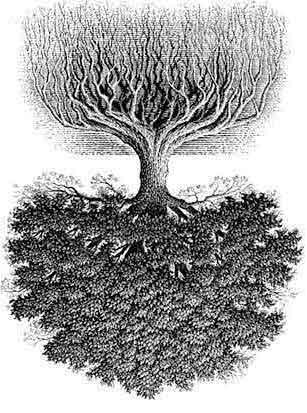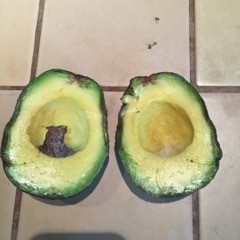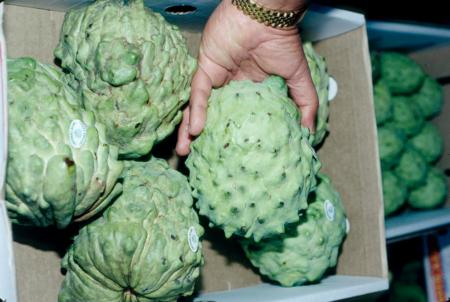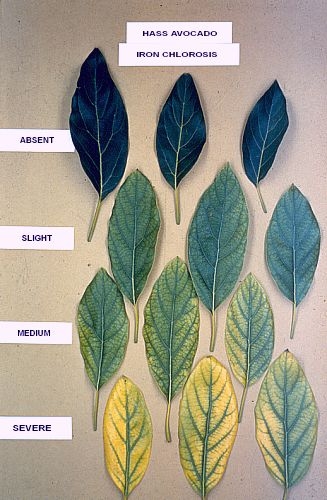- Author: Ben Faber
A recent letter which followed a farm visit to another grower and finally a phone call about planting an avocado tree from another grower. The basics of planting are often overlooked and we should revisit them to make sure we know how to do the basics.
The letter:
I am going to plant some avocado trees on a slope. I will be drilling a hole with an 18 inch auger about three feet deep.
I have lots of wood chips from avocado trimmings. Should I mix some avocado wood chips with the soil to insure good drainage when I plant the new trees?
Or should I mix in some compost to help good drainage? Some areas here have poor drainage because of clay soil.
The response:
DO NOT put anything in the planting hole. It makes drainage worse. And if its not fresh the decomposing gases will kill the roots. And gradually over time, the organic matter decomposes and the tree sinks deeper into the ground, covering the graft union and the tree dies. I[m glad you asked. Someone is spreading the word that this is how to plant. It's a disaster if you do this. DON'T. You think you are doing everything right, but it is wrong. There's physics and biology involved and a good horticulturist knows better because of experience. Mulch applied to the soil surface is not the same as organic matter – planting mix put in the hole.
And watch out for the auger. Especially in heavy soils, the auger can seal the sides of the hole, making an impenetrable surface to the roots. The sides need to be scrapped or scratched to make sure the seal hasn't been created. And don't go 3 feet deep. Go to the depth of the planting sleeve. When you go deeper, the refill soil will compact and the root ball sinks, burying the crown.
From the UCR Avocado website:
http://ucavo.ucr.edu/general/answers.html#anchor1423493
Planting
The avocado is a shallow rooted tree (most of the feeder roots are in the top 6" of soil) which needs good aeration. They do well if mulched with a coarse yard mulch. Current recommendation is to put approx 1/3 cu yd per tree when planting. When applying the mulch, be sure to stay about 6-8 inches away from the trunk of the tree. They like the soil pH around 6 - 6.5. If you can, plant your tree in a spot protected from wind and frost. Also, avocado trees typically do not do well planted in lawns so try to plant your tree in a non-lawn area.
- When should I plant my avocado tree? Avocado trees like warm ground. Ideally, they should go into the ground from March through June. If they go in during the summer there is always the risk of sun damage because the trees can't take up water very well when young.
- How big a hole should I dig? As deep as the current root ball and just as wide as the width plus a little extra so you can get your hands into the hole to plant it. Don't drop the tree into the hole, the roots don't like that, ease it into the hole. The avocado root system is very sensitive and great care should be taken not to disturb the root system when transplanting. If the tree is root bound, however, loosen up the soil around the edges and clip the roots that are going in circles.
- Should I put some gravel, crushed rock or planting mix at the bottom of the hole? No. Do not put gravel or anything else like planting media in the hole. The sooner the roots get out into the bulk soil, the better the tree will do. Planting mix creates a textural difference between the root ball and the bulk soil and causes water movement problems. Remember, there are 5 million acres of tree crops in California planted without planting mix.
- I have a heavy clay soil. Should I elevate the tree in a mound for better drainage? Yes, good idea. Make the mound 1 to 2 feet high and 3 to 5 feet around. Put down 20 pounds of gypsum spread around the base of the tree and mulch the area with 6 inches of woody mulch keeping the material about 6-8 inches away from the tree trunk.
- What do you mean by a "coarse yard mulch" and where can I get some? Redwood bark will work and maybe cocoa bean husks and shredded tree bark. Need something that is woody and about 2 inches in diameter. Coarse yard mulch is available at some garden supply centers. Be sure it is COARSE, not fine, yard mulch - and disease-free to prevent introducing diseases to your tree (like root rot). Another source of coarse mulch would be a tree trimming operation, like Asplundh or Davy. They usually have material that has been pruned from the tops of trees and doesn't contain any diseased roots. Just go through the yellow pages looking for tree services.
These directions hold true of all trees, citrus, avocado, mango..............And for a nice discussion of avocado planting and root rot, go to:
http://www.avocadosource.com/journals/avoresearch/avoresearch_02_01_2002.pdf

- Author: Ben Faber
Here's the Fall newsletter of Topics in Subtropics, and it is on time. Winter hasn't started yet, but get ready.
And the topics are:
- Real-Time Sensor for Early Detection of Citrus Huanglongbing (HLB)
- The 2016 International Citrus Conference
- UC Riverside Scientists Evaluate Trunk Injections of Pesticides for The Management of Ambrosia Beetles in California Avocados
- An Overview of Mango
- Water Based Latex Paint as a Means to Track Ambrosia Beetle Activity on Infested Trees
http://ceventura.ucanr.edu/newsletters/Topics_in_Subtropics66242.pdf
To subscribe:


- Author: Ben Faber
A recent trip to Spain was an opportunity to look at their cherimoya production practices. One of the most interesting is their ability to manage the tree through pruning to produce fruit off-season (in spring) when the prices are the highest. IN California our low period of production is in the summer. The climate in Spain along the Mediterranean coast is warmer and more humid than coastal California, so most tree crops are about two months advanced in their production. So in the text I refer to a period when something is done and then follow it with another date. The one in parenthesis is the probable time in California if the date in Spain is used. So, to produce fruit in spring (summer) in March/April when prices are high:
Remove all shoots from the previous year in March (May)
With the new shoots, prune them back 6 inches in length around July 15 (September 15)
Pollinate the flowers that are produced in the period of August to September (Sept/Nov)
Pick fruit in March/April (June/Aug)
Advantages:
Fruit is produced when prices are higher
Generally fewer seeds than at other periods
In some cases there is higher sugar content in the off-season frui
Disadvantages:
Not always consistent with all cultivars
Off-season fruit often has black spots in the pulp
May see increased leaf drop
In some cultivars, the skin is more prone to abrasion, and this is already a very delicate fruit
There are other fruit species that fruiting date can be manipulated by pruning, such as evergreen blueberries, guava, lime, mango and carambola (star fruit). Always it is to find a better market for the fruit.
X

- Author: Elizabeth Fichtner and Rachel Elkins
Lime-induced Iron Chlorosis: a nutritional challenge in the culture of several subtropical perennial crops in California
Elizabeth Fichtner, UCCE Tulare County and Rachel Elkins, UCCE Lake and Mendocino Counties
Spring, and new leaves are coming out, but this could, but yellow could be a sign of iron chlorosis, as well.
Although iron (Fe) is the 4th most abundant element in the lithosphere, Fe deficiency is among the most common plant micronutrient deficiencies. Fe deficiency in plants is common in calcareous soils, waterlogged soils, sandy soils low in total Fe, and in peat and muck soils where organic matter chelates Fe, rendering the element unavailable for plant uptake. In California, lime-induced Fe deficiency is often observed in soils and irrigation water containing free lime, and is exacerbated by conditions that impede soil drainage (ie. compaction, high clay content), resulting in reductive conditions. Given that over 30% of the world's soils are calcareous, lime-induced Fe deficiency is a challenge in numerous perennial cropping systems including: grapes, pears, apple, citrus, avocado, pecans, and stone fruit (prune, almond, apricot, peach, nectarine, cherry).
In most soils, Fe oxides are the common source of Fe for plant nutrition. Solubility of Fe oxides is pH dependant; as pH increases, the free ionic forms of the micronutrient are changed to the hydroxy ions, and finally to the insoluble hydroxides or oxides. In calcareous soils, the bicarbonate ion inhibits mobilization of accumulated Fe from roots to foliage and directly affects availability of Fe in soil by buffering soil pH. When irrigation water is also high in bicarbonate, probability of Fe deficiency is enhanced because bicarbonate is continuously supplied to the soil, and more importantly, the roots may become crusted with lime as water evaporates, thus inhibiting root growth and function. Inside the plant, bicarbonate inhibits nutrient translocation from roots to aboveground plant parts. The adverse effects of high bicarbonate levels are exacerbated in very saturated, very dry, or compact soils, where bicarbonate levels increase concurrent with diminished root growth and nutrient uptake.
Symptoms of Fe deficiency in plants
Fe is immobile in plants; therefore, symptoms appear in young leaves. Interveinal chlorosis (Figure 1) is the main symptom associated with Fe deficiency, followed by reduced shoot and root growth, complete foliar chlorosis, defoliation, shoot dieback, and under severe conditions may result in tree mortality. Overall productivity (yield) is reduced, mainly from a reduced number of fruiting points.
Plant Adaptation
Plant species and cultivars vary in their sensitivity to Fe deficiency, and are categorized as either "Fe-efficient" or "Fe-inefficient". Fe-efficient plants have Fe uptake systems that are switched on under conditions of Fe deficiency. Fe-inefficient plants are unable to respond to Fe deficient conditions. All Fe-efficient plants, except grasses, utilize a Fe-uptake mechanism known as Strategy 1. Strategy 1 plants decrease rhizosphere pH by release of protons, thus increasing Fe solubility. Some plants may excrete organic compounds in the rhizosphere that reduce ferric iron (Fe3+) to the more soluble ferrous (Fe2+) forms or form soluble complexes that maintain Fe in solution. Additionally, roots of Strategy 1 plants have specialized mechanisms for reduction, uptake, and transfer of Fe within the plant. Strategy 2 plants (grasses) produce low molecular weight compounds called phytosiderophores which chelate Fe and take up the chelated Fe with a specific transport system.
Amelioration of Fe chlorosis
Planting sites in calcareous soils should be well drained to provide optimal conditions for root growth and nutrient uptake. Waterlogged and compact soils contain
more carbon dioxide, which reacts with lime to form even more bicarbonate. These conditions, as well as very dry soils, also inhibit microbial activity which aids in
solubilization and chelation of Fe. Prior to planting, soils and water should be tested to determine the pH, lime equivalent, and bicarbonate concentration. Bicarbonate concentrations greater than 3 meq/L in irrigation water increase the hazard of lime accumulation on and around roots. If high bicarbonate water must be used, the pH must be adjusted to 6.0-6.5 to dissolve the bicarbonate and prevent it from negating the effects of soil-based treatments. In microsprinker and drip systems, acidification of irrigation water will also reduce the risk of emitter clogging, a common problem at bicarbonate levels over 2 meq/L. The cost of reducing the pH of irrigation water will more than compensate for the savings incurred from avoiding wasted investment in failed soil- and plant-based remedies. Systems can be set up to continuously and safely inject water with acids such as sulfuric, urea-sulfuric, or phosphoric during irrigations. Specific choice and rate will depend on crop, soil type, other nutrient needs, availability, and cost. Downstream pH meters are available to continuously adjust rate of acid use. Acetic and citric acid can be utilized by organic growers.
Soil based pre-plant treatments to reduce pH include elemental sulfur (S) and acids as mentioned above. It is only necessary to treat a limited area near the root zone to ameliorate symptoms because the tree only needs to take up a small amount of Fe. Material can be shanked in or banded and incorporated in the prospective tree row. One ton of elemental sulfur per treated acre is needed to mitigate three tons of lime, and may need to be re-applied every 3 to 5 years after planting. The addition of organic matter such as well-composted manures will benefit poorly drained or compact soils by increasing aeration for better root growth, fostering chelation of nutrient cations, and reducing pH (depending on source material).
If possible, choose a Fe efficient species or cultivar. In perennial systems, lime-tolerant rootstocks may be the first line of defense in combating Fe deficiency. Some rootstocksmentioned are peach-almond and Krymsk-86 for stone fruit, Gisela 5 for cherry, and Pyrus communis for pear. Ongoing research studies in Europe focus on screening rootstocks of grape and olive for lime tolerance.
Once soil and water quality improvements are made, post-plant management strategies may also be implemented to ameliorate lime-induced Fe chlorosis in the short term. Soil can be acidified as described above. Individual trees can be treated by digging four to six 12-24 inch
holes around the drip line and burying a mixture of sulfur and Fe fertilizer. Historically, two principal methods have been utilized: 1) foliar application of inorganic Fe salts (ie. ferrous sulfate), and 2) soil or foliar application of synthetic chelates. Application of Fe salts to foliage may have mixed results due to limited penetration of Fe into leaves and inadequate mobilization within the plant. Use of Fe chelates may be of benefit; however, they are expensive and pose an environmental concern due to their mobility within the soil profile. Because soil lime interferes with Fe mobility with the plant, repeat application of inorganic Fe salts or Fe chelates may be necessary throughout the growing season.
Choice of nitrogen (N) fertilizer may also influence solubility of rhizosphere Fe. When N is applied in the ammonium form (NH4+), the root releases a proton (H+) to maintain a charge balance, thus reducing rhizosphere pH. Alternately, fertilization with nitrate (NO3-) results in root release of hydroxyl ions (OH-), resulting in an increase in rhizosphere pH. Solubility of Fe3+ increases 1000 fold with each one unit decrease in pH; therefore, fertility-induced rhizosphere pH changes may significantly influence Fe availability.
New methods for amelioration of Fe chlorosis are under investigation. For example, container studies have demonstrated that inter-planting sheep's fescue, a Strategy 2 plant, with a Fe-inefficient grape rootstock may ameliorate Fe chlorosis in grape. In this system, the grass produces a phytosiderophore that enhances Fe availability to the grape. Additionally, soil amendment with Fe3(PO4)2• 8H2O), a synthetic iron(II)-phosphate analogous to the mineral vivianite, has been effective at preventing Fe chlorosis in lemon, pear, olive, kiwi, and peach. Vivianite has a high Fe content (~30%) and serves as a slow release source of Fe in calcareous soils.
Figures below: 1) Shoot dieback in citrus, 2) Interveinal chlorosis in citrus and 3) Various stages of iron chlorosis in avocado.






